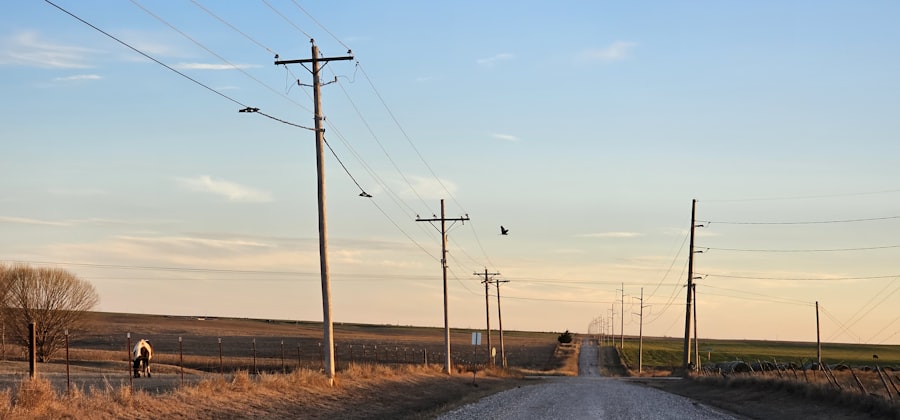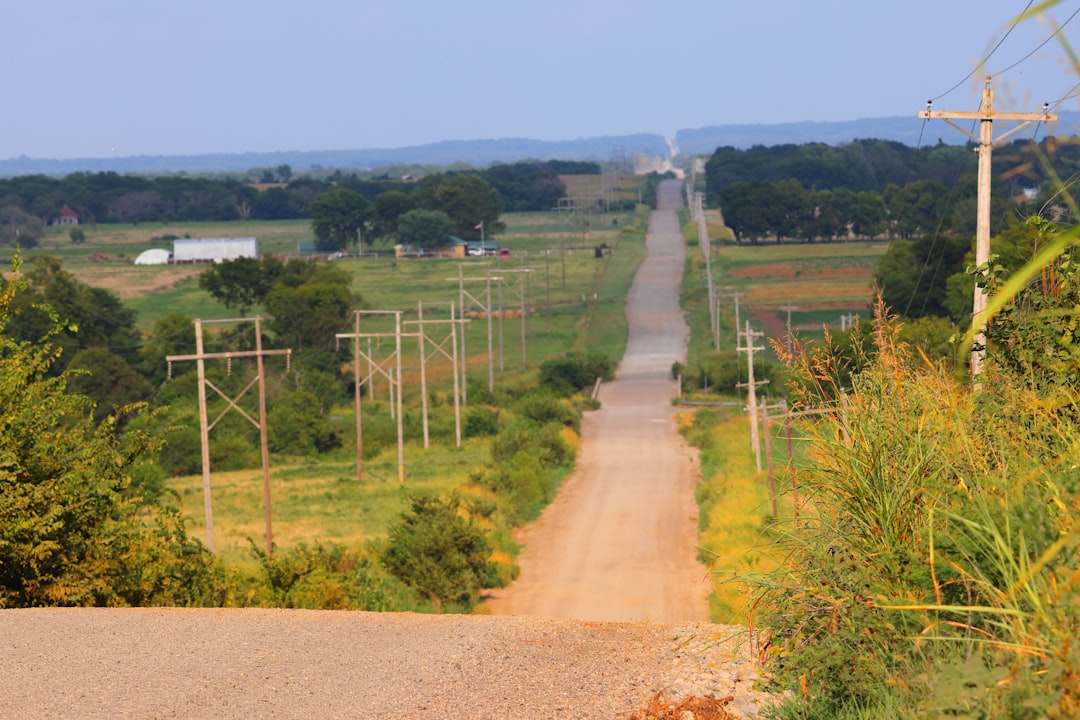Rural infrastructure serves as the backbone of rural communities, playing a crucial role in their development and sustainability. It encompasses a wide range of facilities and services, including transportation networks, utilities, healthcare systems, and educational institutions. The significance of robust rural infrastructure cannot be overstated, as it directly impacts the quality of life for residents and the economic viability of these areas.
Well-developed infrastructure fosters connectivity, enabling residents to access essential services and opportunities that are often taken for granted in urban settings. Moreover, rural infrastructure is vital for attracting investment and fostering economic growth. Businesses are more likely to establish operations in areas with reliable roads, efficient utilities, and accessible communication networks.
This, in turn, creates jobs and stimulates local economies. The presence of adequate infrastructure also enhances the ability of rural communities to participate in broader markets, allowing them to sell agricultural products and other goods more effectively. Thus, investing in rural infrastructure is not merely a matter of convenience; it is an essential strategy for ensuring the long-term prosperity and resilience of these communities.
Key Takeaways
- Rural infrastructure is crucial for the overall development and well-being of rural communities.
- Challenges faced by rural communities include inadequate transportation, limited access to healthcare and emergency services, and lack of funding for infrastructure development.
- Funding and investment in rural infrastructure is essential for improving the quality of life and economic opportunities in rural areas.
- Transportation and connectivity are major concerns in rural areas, impacting access to essential services and economic opportunities.
- Access to healthcare, emergency services, energy, education, and technology is limited in rural communities, affecting the overall development and well-being of residents.
Challenges Faced by Rural Communities
Rural communities face a myriad of challenges that hinder their growth and development. One of the most pressing issues is the lack of adequate infrastructure, which can lead to isolation and limited access to essential services. Many rural areas struggle with poorly maintained roads, insufficient public transportation options, and inadequate internet connectivity.
These deficiencies can create significant barriers for residents seeking employment, education, and healthcare services. As a result, many individuals may find themselves trapped in a cycle of poverty, unable to access the resources necessary for upward mobility. In addition to infrastructural challenges, rural communities often grapple with demographic shifts that exacerbate their struggles.
Many young people leave these areas in search of better opportunities in urban centers, leading to an aging population and a shrinking workforce. This demographic decline can further strain local economies and reduce the tax base needed to support essential services. Furthermore, rural areas frequently experience limited access to healthcare facilities, which can result in poorer health outcomes for residents.
The combination of these factors creates a complex web of challenges that require innovative solutions and targeted interventions.
Funding and Investment in Rural Infrastructure

Securing funding for rural infrastructure projects is a significant hurdle that many communities face. Traditional funding sources often prioritize urban areas, leaving rural regions at a disadvantage when it comes to accessing financial resources for development. This disparity can lead to a lack of investment in critical infrastructure projects, perpetuating the cycle of neglect that many rural communities experience.
To address this issue, it is essential for policymakers to recognize the unique needs of rural areas and allocate resources accordingly. Innovative funding mechanisms are emerging as potential solutions to bridge the gap in rural infrastructure investment. Public-private partnerships, for instance, can leverage private sector resources to enhance infrastructure development while sharing the financial burden with local governments.
Additionally, federal and state grants specifically aimed at rural development can provide much-needed capital for projects that improve transportation, utilities, and other essential services. By diversifying funding sources and encouraging collaboration between public and private entities, rural communities can begin to address their infrastructure needs more effectively.
Transportation and Connectivity in Rural Areas
| Metrics | Data |
|---|---|
| Number of paved roads | 120 miles |
| Public transportation coverage | 30% |
| Number of bridges | 15 |
| Percentage of households with access to a car | 85% |
Transportation is a critical component of rural infrastructure that significantly impacts residents’ quality of life. In many rural areas, inadequate road networks and limited public transportation options can isolate communities from essential services and economic opportunities. Poorly maintained roads can hinder access to healthcare facilities, schools, and employment centers, making it difficult for residents to thrive.
Furthermore, the lack of reliable transportation options can disproportionately affect vulnerable populations, such as the elderly and low-income families. To improve transportation and connectivity in rural areas, innovative solutions are needed. Expanding public transportation services can help bridge the gap for those without access to personal vehicles.
Additionally, investing in road maintenance and upgrades is essential for ensuring safe travel within these communities. Technology also plays a role in enhancing connectivity; initiatives such as ride-sharing programs or on-demand transportation services can provide flexible options for residents who need assistance getting around. By prioritizing transportation infrastructure, rural communities can foster greater accessibility and inclusivity.
Access to Healthcare and Emergency Services in Rural Communities
Access to healthcare is a pressing concern for many rural communities, where medical facilities are often scarce or located far from residents’ homes. The distance to healthcare providers can deter individuals from seeking necessary medical attention, leading to poorer health outcomes overall. Additionally, emergency services may be limited in rural areas due to a lack of resources or personnel, which can have dire consequences during critical situations.
To address these challenges, innovative approaches are being explored to enhance healthcare access in rural regions. Telemedicine has emerged as a promising solution, allowing patients to consult with healthcare professionals remotely through video calls or online platforms.
Furthermore, community health initiatives that focus on preventive care and education can empower residents to take charge of their health and well-being. By improving access to healthcare services and emergency response systems, rural communities can enhance their overall quality of life.
Energy and Utilities in Rural Areas

Reliable energy and utility services are fundamental components of rural infrastructure that directly impact residents’ daily lives. However, many rural areas face challenges related to energy access and utility provision. Limited infrastructure can result in inconsistent electricity supply or high costs for residents who rely on alternative energy sources such as propane or wood.
Additionally, water supply systems may be outdated or insufficiently maintained, leading to concerns about water quality and availability. Investing in renewable energy sources presents an opportunity for rural communities to enhance their energy independence while addressing utility challenges. Solar panels, wind turbines, and other sustainable energy solutions can provide reliable power while reducing reliance on traditional energy sources.
Furthermore, improving water infrastructure through modern technologies can ensure that residents have access to clean and safe drinking water. By prioritizing energy efficiency and utility improvements, rural communities can create a more sustainable future while enhancing residents’ quality of life.
Education and Technology in Rural Schools
Education is a cornerstone of community development, yet many rural schools face significant challenges related to infrastructure and technology access. Limited funding often results in outdated facilities and resources that hinder students’ learning experiences.
To address these issues, targeted investments in rural education are essential. Upgrading school facilities and providing modern technology can create an environment conducive to learning while preparing students for future opportunities. Furthermore, partnerships with technology companies can help bridge the digital divide by providing students with access to high-speed internet and digital learning tools.
By prioritizing education infrastructure and technology access, rural communities can empower their youth and foster a brighter future.
Agriculture and Rural Economic Development
Agriculture remains a vital component of rural economies, providing jobs and sustenance for many communities. However, the agricultural sector faces its own set of challenges related to infrastructure development. Limited access to transportation networks can hinder farmers’ ability to transport goods to market efficiently, impacting their profitability.
Additionally, outdated irrigation systems or lack of access to modern farming technologies can limit productivity. Investing in agricultural infrastructure is crucial for enhancing rural economic development. Improving transportation networks can facilitate better access to markets while supporting local businesses that rely on agricultural products.
Furthermore, providing farmers with access to modern technologies such as precision agriculture tools can increase efficiency and yield while promoting sustainable practices. By prioritizing agricultural infrastructure investments, rural communities can strengthen their economies while ensuring food security.
Environmental Concerns in Rural Infrastructure
As rural communities seek to develop their infrastructure, environmental concerns must be taken into account to ensure sustainable growth. Poorly planned infrastructure projects can lead to habitat destruction, water pollution, and other negative environmental impacts that threaten local ecosystems. Balancing development with environmental stewardship is essential for preserving the natural resources that many rural communities depend on.
Implementing environmentally friendly practices in infrastructure development is key to addressing these concerns. Utilizing sustainable materials for construction projects and incorporating green spaces into urban planning can mitigate negative impacts on the environment. Additionally, promoting renewable energy sources can reduce carbon footprints while providing reliable power for residents.
By prioritizing environmental considerations in infrastructure planning, rural communities can achieve sustainable growth that benefits both residents and the environment.
Innovative Solutions for Rural Infrastructure Challenges
Addressing the unique challenges faced by rural communities requires innovative solutions that leverage technology and community engagement. One promising approach is the use of smart technology in infrastructure development. Smart sensors can monitor road conditions or utility usage in real-time, allowing for proactive maintenance and resource management.
This technology not only enhances efficiency but also reduces costs associated with repairs or service disruptions. Community engagement is another critical component of finding effective solutions for rural infrastructure challenges. Involving residents in the planning process ensures that projects align with their needs and priorities while fostering a sense of ownership over local initiatives.
Collaborative efforts between local governments, businesses, and community organizations can lead to creative solutions that address specific challenges faced by each community. By embracing innovation and collaboration, rural areas can develop resilient infrastructure that meets the needs of their residents.
Government Policies and Initiatives for Rural Infrastructure
Government policies play a pivotal role in shaping the future of rural infrastructure development. Recognizing the unique challenges faced by these communities is essential for creating effective policies that promote investment and growth. Federal initiatives aimed at improving rural infrastructure have gained momentum in recent years, focusing on transportation improvements, broadband expansion, and healthcare access.
Programs such as the USDA’s Rural Development initiatives provide funding opportunities for various projects aimed at enhancing infrastructure in rural areas. Additionally, state-level policies that prioritize rural investment can help ensure that resources are allocated equitably across regions. By fostering collaboration between federal, state, and local governments, policymakers can create a comprehensive framework that supports sustainable infrastructure development in rural communities.
In conclusion, addressing the multifaceted challenges faced by rural communities requires a concerted effort from various stakeholders—government agencies, private sector partners, non-profit organizations, and community members themselves. By prioritizing investment in infrastructure across transportation, healthcare, education, energy, agriculture, and environmental sustainability, these communities can build a brighter future characterized by resilience and opportunity.
Rural infrastructure in America faces numerous challenges, from inadequate transportation networks to limited access to high-speed internet. These issues significantly impact the quality of life and economic opportunities for rural communities. An insightful article that delves into these challenges is available on MyGeoQuest, which discusses the various aspects of rural infrastructure and potential solutions to improve them. For more detailed information, you can read the article by visiting this link.
WATCH NOW! Why America’s Heartland Is Disappearing Fast
FAQs
What are the main challenges facing rural infrastructure in America?
The main challenges facing rural infrastructure in America include lack of funding, aging infrastructure, limited access to high-speed internet, and inadequate transportation systems.
How does the lack of funding impact rural infrastructure in America?
The lack of funding for rural infrastructure in America hinders the maintenance and development of essential facilities such as roads, bridges, water systems, and broadband networks, leading to deteriorating infrastructure and limited access to basic services.
What are the implications of inadequate transportation systems in rural America?
Inadequate transportation systems in rural America can hinder economic development, limit access to healthcare and education, and impede the movement of goods and services, impacting the overall quality of life for rural residents.
Why is access to high-speed internet a challenge in rural America?
Access to high-speed internet is a challenge in rural America due to the high cost of infrastructure development, low population density, and limited competition among internet service providers, resulting in a digital divide between rural and urban areas.
How does aging infrastructure impact rural communities in America?
Aging infrastructure in rural communities can lead to increased maintenance costs, reduced reliability of essential services, and potential safety hazards, posing significant challenges for residents and businesses in rural areas.
